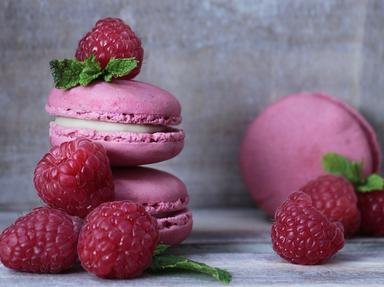Quiz Answer Key and Fun Facts
1. While most of us refer to "Mastering the Art of French Cooking, Part One", as "Julia Child's book", she did not work alone. How many co-authors did she have?
2. Which category of recipes forms Chapter One of "Mastering the Art of French Cooking - Part One"?
3. Chapter Four of the book entitled "Entrees and Luncheon Dishes", starts with a recipe for "Pie Dough-Pastry Crusts". Julia calls this "pâte brisée". What is this commonly known as in English?
4. In Chapter Five - Fish, we are instructed on how to make scallops and mushrooms in white wine sauce and, if possible, to use a large scallop shell to serve this very elegant and tasty dish. What is the French name for scallops that are cooked and served in this manner?
5. In Chapter Six - Poultry, one of the most well-known chicken dishes is outlined for us to prepare, and in only two pages! Most good home cooks learned how to prepare this dish from Julia's recipe and it is now in the repertoire of anyone who loves to prepare French comfort food with which to delight their guests. What is it?
6. In Chapter Seven - Meat - Child addresses some of the wonderful ways that we can prepare better cuts of meat such as steaks. She likes to enhance a good plain broiled steak with either a flavoured butter or a sauce. Which sauce is one that the French often serve with a steak?
7. Chapter Eight - Vegetables - lists many tasty treatments for all different kinds of vegetables, both usual and unusual. However, what Child does for potatoes is a far cry from French fries. One of her fans' favourite recipes
is Gratin Dauphinois, namely potatoes cooked in milk, cheese and garlic. What would we call this recipe in English?
8. Chapter Ten - Desserts and Cakes - instructs cooks on how to make a light custard sauce to coat the plate of elegant desserts such tarts or light pastries. In French this sauce is called "Crème Anglaise"? Why is that?
9. Also in Chapter 10, Child instructs us on how to make that temperamental but delightful French dessert - the soufflé. Unfortunately, there are no "make-aheads" on this one. A soufflé must be served as soon as it is cooked. What will happen if it is left to stand around?
10. Last, but by no means least, Child prefaces nearly all of the recipes, where appropriate, with a helpful suggestion for the cook. What is that suggestion?
Source: Author
smeone
This quiz was reviewed by FunTrivia editor
WesleyCrusher before going online.
Any errors found in FunTrivia content are routinely corrected through our feedback system.

